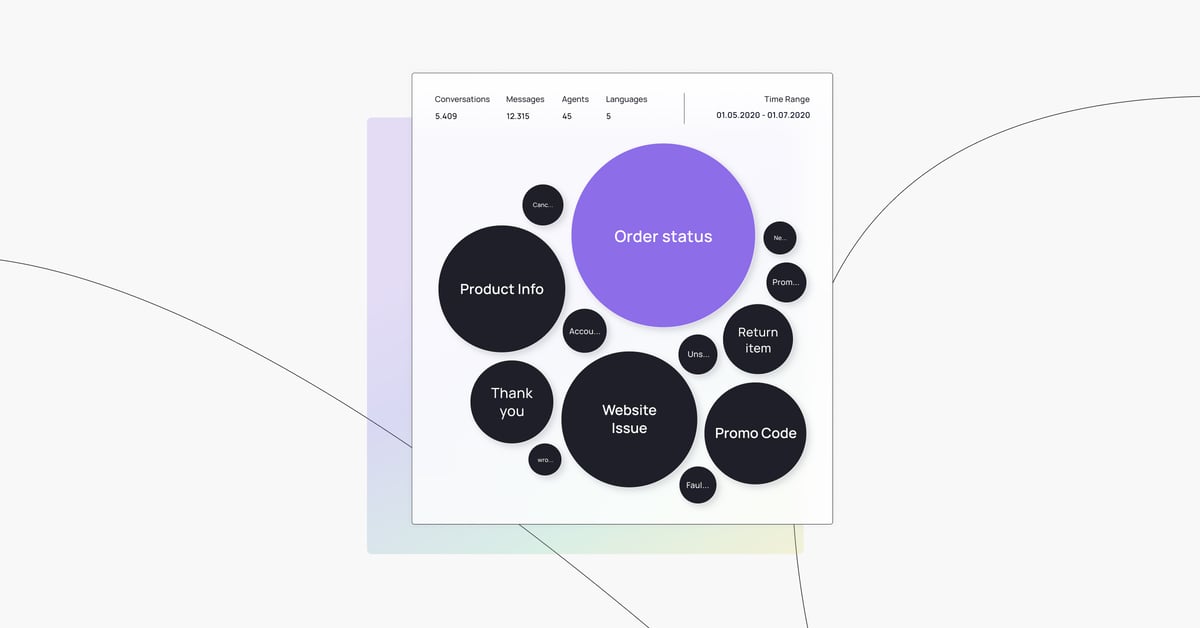Holistic automation means so much more than chatting with a bot. That’s because virtual agents represent just the tip of the iceberg when it comes to conversational AI. The most helpful bots and smoothest conversational flows could never work their magic without a deep foundation of data — your historical support data.
The CS Automation Explorer is designed to turn that data into gold. Powered by our market-leading AI, it assesses with astounding accuracy where your customers’ most common interests and pain points lie. It then empowers your CX team to prioritize automation tasks and maximize ROI as you embark on your automation journey.
So what is the Automation Explorer and why should you know all about it?
What you think your customers are dying to know...
...may not always line up with what they’re actually eager to hear.
Our Solution Architect Maeve Condell has witnessed her fair share of aha moments while onboarding customers that were confident their FAQs were bullet-proof:
“I had a customer who gave us a list of 15 FAQs they wanted to cover. We could immediately tell from the Automation Explorer’s analysis that two or three of these questions were rarely, if ever, being asked, such as store location or contact info which customers could easily Google,” recalls Maeve.
The CS Automation Explorer identified that customers were frequently coming to the chat with questions that didn’t show up on that original list at all, including issues at checkout, updating their account, or more information on a product.
It’s all in the data, and it’s yours for the taking
When collaborating with Ultimate, customers pass through a Bootcamp, where they are introduced to the CS Automation Explorer on day one, and learn how to train an AI model from their historical data.
Said data can be compiled from existing chat or email messages, or by importing data from a CRM platform, like Zendesk, Freshchat, or Salesforce.
The AI then applies a technique called clustering to identify and visualize the most common topics (suggested “intents”) it has found. These are usually the ones you'll want to automate first.
Discover the power of historical data
How does the AI know which intents to match with which expressions?
Like most processes in intelligent AI, it’s a multi-step process. First, the report is run against an industry benchmark model to see all possible intents. Next, it is trained to cluster similar ones. The more times you run the report, the more accurate your results.
“To make sure clients are confident in their understanding of the AI, for the first few sessions, we’ll spend the first 10 minutes training from the Impact Report. Within just that time, I’ve had clients who have been able to train their main intents with enough data to launch their virtual agent.”
- Maeve Condell, Solution Architect, Ultimate
Which historical data will provide the best results?
While the amount of necessary intents varies from industry to industry, as a general rule of thumb, your AI can create strong results with 30-40 frequently recurring intents.
Which selection of data should you use to predict future customer requests? To answer that question, you’ll need to first understand the contextual events — and recurring cycles — shaping customer requests in your industry. An ecommerce business trying to brave the peak season rush, for example, should look towards the 2020 winter holidays for 2021 CX needs rather than the autumn months.
The decision to automate is a big one. Its impact on your business cannot be understated, which is why it is so important to get it right from the beginning. With the CS Automation Explorer, you’ll be able to know — really know — what your customers want — so you can give them what they truly need.
